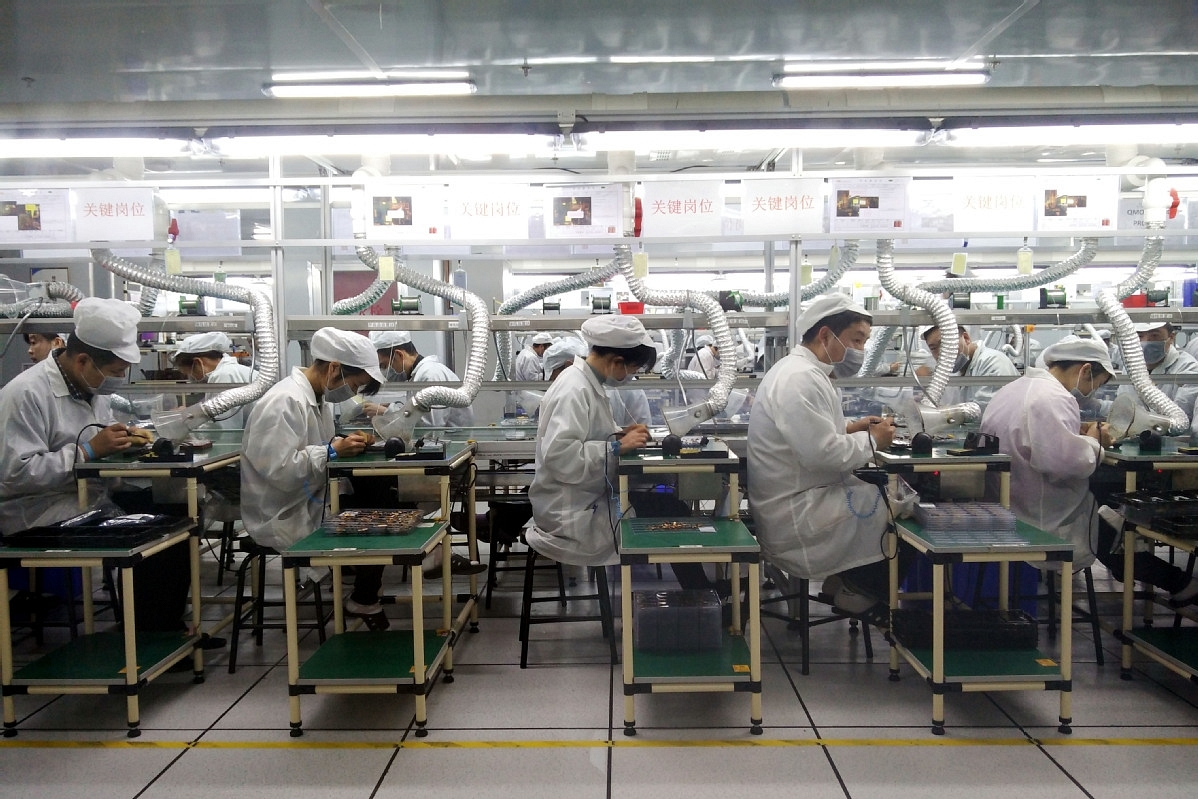Analysis
Explained: How Foxconn Finds Itself Caught In The Crossfire As Chip Manufacturing Emerges As Major Battleground In US-China Tech War
- How Foxconn Finds Itself Caught In The Crossfire As Chip Manufacturing Emerges As Major Battleground In US-China Tech war

Foxconn
Senior national security officials of Taiwan have reportedly asked the country's electronics manufacturing giant Foxconn to rescind their decision to invest in Chinese chip manufacturing company Tsinghua Unigroup.
The request by Taiwanese authorities comes amid threat by an increasingly belligerent China to forcibly annex the island state and U.S. intensifying its tech war with China in a bid to reduce Beijing’s presence in the global supply chain
In a filing to the Taiwan Stock Exchange (TWSE) on July 14, the company had disclosed that its subsidiary Foxconn Industrial Internet Co Ltd had invested $797 million in the state-backed Tsinghua Unigroup via a string of smaller investments in Chinese companies.
On July 30, TWSE fined Foxconn $5,010 saying that the electronic manufacturing behemoth did not disclose its plan to invest in Tsinghua Unigroup as soon as the board approved the deal.
Earlier in July, the Investment Commision under Taiwan's Ministry of Economic Affairs issued a notice to Foxconn asking it to explain its decision to invest in Tsinghua Unigroup before gaining regulatory approval in Taiwan.
While Foxconn has been a strong electronic manufacturing services (EMS) business with demonstrated prowess in manufacturing (or rather assembling) products like Apple’s iPhones, Microsoft’s Xbox and Sony’s Playstations etc, it is now trying to establish its presence in semiconductor space. The investment in troubled Chinese semiconductor company was seen as an attempt to expand its footprint in chip industry.
When the company founder Terry Gou stepped down to pursue his political ambition, Young Liu, then the general manager of Foxconn's semiconductor unit, succeeded him as the chairman of the conglomerate. He is widely regarded as the semiconductor expert at Foxconn and is counted among the key decision-makers regarding the company's plans for semiconductor fabs.
Tsinghua Unigroup, once viewed as China’s best bet for reducing dependence on imported chips and mounting a challenge against foreign chip manufacturers, has faced several setback recently including one of its creditors has requested a court to begin bankruptcy proceedings against the company.
Over the years, the Chinese government has poured huge funds into Tsinghua Unigroup, along with other chip makers such as Semiconductor Manufacturing International Corp, in hopes of building national champions in chips.
Although China is the world’s largest consumer of semiconductors, it has a disproportionately small international market share of production and a very low domestic chip self-sufficiency rate.
One success story for China has been the Semiconductor Manufacturing International Corp (SMIC), the country's top chip maker, is already able to produce 14-nm chips. Some Chinese observers have claimed that it has also achieved the capability to make 7-nm chips.
Aligning with U.S
The attempt to rein in Foxconn is also seen as signal by Taiwanese government to align with U.S's moves to cripple China’s chip self-sufficiency drive.
Last week, US President Joe Biden signed the Chips and Science Act into law which will provide $52 billion in subsidies for domestic chip makers on top of tens of billions of dollars for scientific research.
Under the law, the subsidy recipients for domestic semiconductor production are barred from expanding production in China beyond “legacy semiconductors” – defined as chips made with 28-nanometre process technology or older – for 10 years.
The act could cast a shadow over China’s supply chain security and technology development.
The U.S is also aggressively pushing for a new grouping called the Chip 4 , envisaged as a strategic alliance of four global chip powerhouses (U.S, South Korea, Japan and Taiwan. The partnership is being viewed by Beijing as a competitive step aimed at ousting it from semiconductor value chains.
Introducing ElectionsHQ + 50 Ground Reports Project
The 2024 elections might seem easy to guess, but there are some important questions that shouldn't be missed.
Do freebies still sway voters? Do people prioritise infrastructure when voting? How will Punjab vote?
The answers to these questions provide great insights into where we, as a country, are headed in the years to come.
Swarajya is starting a project with an aim to do 50 solid ground stories and a smart commentary service on WhatsApp, a one-of-a-kind. We'd love your support during this election season.
Click below to contribute.
Latest